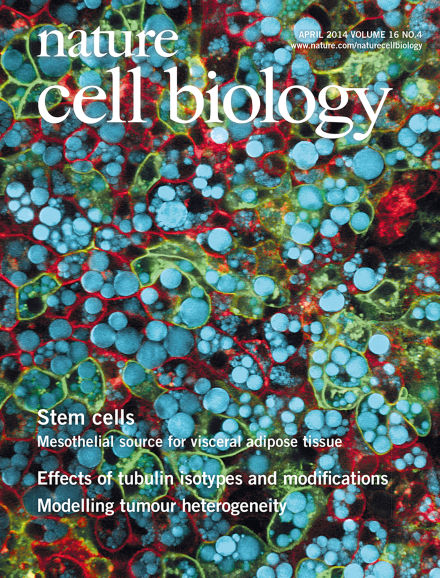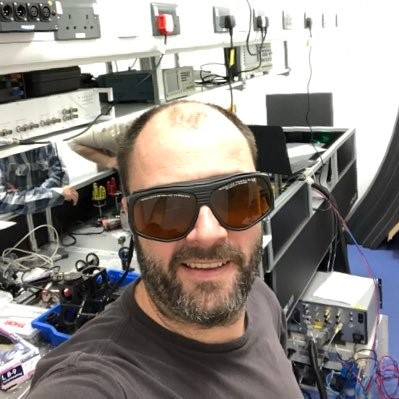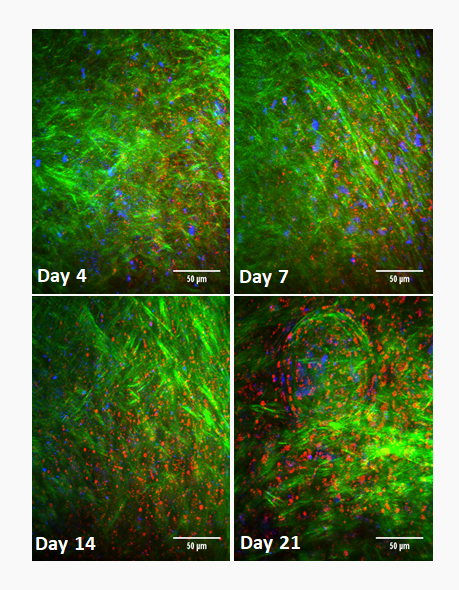Photonic Solutions have been representing APE in the UK and Ireland for 18 years. Working with a similar mindset and common understanding, we have had great success in making APE the unrivalled global leader in ultrashort pulse diagnostics and tunable wavelength conversion. In this respect, we are proud of the part we have played in helping APE’s PulseCheck autocorrelator to gain the status as the unrivalled global leader in ultrashort pulse characterisation. At Photonic Solutions, we are proud to be the UK and Ireland representatives for such an industry-leading brand.
Since 2005, we have collaborated with APE across countless applications, getting their world-leading ultrafast laser technologies into the hands of university researchers, industrial manufacturers, user facilities and national laboratories.
Our very first APE sale was to the University of Nottingham in 2005, who purchased one of the first Levante IR Picosecond OPOs.
We have since supplied, installed, and technically supported APE systems in universities and research facilities across the whole of the UK and Ireland, where they have played key developmental roles in fields such as cancer treatments, drug development and in-vivo imaging.
Use Study 1: Edinburgh Cancer Centre
Dr Martin Lee at The Edinburgh Cancer Research Centre (ECRC) has been using an APE PicoEmerald (and more recently the newly improved and updated PicoEmerald S) system for more than 11 years. This unit not only replaced a previously room-sized setup, but automated and simplified the running of experiments – you no longer need a PhD just to figure out how to turn the system on!
This convenient, user-friendly, and hands-free multiphoton laser system can perform a multitude of imaging techniques, including Coherent Raman Scattering (such as CARS and SRS), second harmonic generation, two photon fluorescence, and fluorescence lifetime imaging.
Bringing a new technology to people’s attention is always challenging. But fortunately, one of ECRC’s first projects had a perfectly suited imaging challenge. Dr You-Ying Chau was interested in the developmental origin of fat. Using a fluorescent marker, she was able to label Wt1 expressing cells, but showing that lipids were forming inside these cells was challenging for her. However, Coherent Raman is great at imaging lipids – and being label free meant there were no preparation steps involved. Driven by data acquired with the APE PicoEmerald, ECRC helped Dr Chau complete the manuscript, and the great images even made the front cover of Nature Cell Biology.

Thanks to these enhanced imaging capabilities, PhD students Dr William Tipping and Dr Kristel Sepp managed to image a modified drug with a ‘Raman tag’ added and an existing cancer therapeutic that already contained this ‘Raman tag’ motif in cells. Their work helped to secure the Edinburgh Cancer Centre funding for a 3-year Cancer Research UK project to study Raman tags in Oncology Drug Development.
Working closely with Photonic Solutions, the ECRC has been able to keep up to date with new products in the field, receive urgent quotes for grant applications, and benefit from Photonic Solutions’ exceptional repair and replacement services. The PicoEmerald S’s upgradable components, like the optical modulator, significantly improved the system’s stimulated Raman scattering (SRS) performance.
“Photonic Solutions have really helped us keep our PicoEmerald in great shape, whether that’s been through being able to upgrade parts in the field, like the optical modulator to really improve the SRS performance or by handling repairs and replacement parts when needed. We’re only just now on our second system so we’ve managed to get an amazing amount of mileage out of it.”
Dr Martin Lee
Use Study 2: Exeter University
Prof Julian Moger holds the honour of being the first person in the UK to purchase a famous APE Levante Emerald picosecond OPO. In 2007 he established the first Coherent Raman Scattering laboratory in the country, focusing on non-linear optical spectroscopy.
Using CRS, Prof Moger is researching the development and application of nonlinear techniques in biomedicine. His work exploits the intrinsic non-linear optical response of biomolecules, deriving label-free biochemical contrasts in living systems.
This includes developing techniques to visualise the accumulation of potentially harmful non-organic materials, most famously microplastics, in biological tissues and their effects on ecosystems.
The images acquired using their APE Levante Emerald has provided unequivocal proof of the build-up of microplastics in marine life and has played a key role in the banning of the use of microplastics in some industries in the UK.
The APE Levante Emerald has been at the centre of Prof Moger’s research at the University of Exeter since 2007, running almost continuously. Photonic Solutions, have been on hand at every step of their journey, assisting with upgrades to maintain state-of-the-art performance and reliability for 15 years.

Working with Photonic Solutions, Prof Moger has been able to bring his ideas and visions for custom laser systems to life, designing bespoke systems for a range of specific applications.
With a relationship spanning over a decade and a half, APE, Photonic Solutions and Prof Moger have designed and built several Coherent Raman scatter systems which are influencing UK policies and increasing our understanding of the impact of inorganic materials on ecosystems.
“APE and Photonic Solutions are fantastic companies to work with. I have been working with them for over 15 years and would highly recommend them. I have several coherent Raman scatter systems supplied by APE and Photonic Solutions and would be happy to offer potential buyers a demo.”
Prof Julian Moger
Use Study 3: Southampton University
Prof Sumeet Mahajan leads a multi-disciplinary group of multimodal nonlinear imaging experts working on biomedical applications. This team of physicists, chemists, mathematicians and biologists is working to actively bring these new solutions to the medical sector.
The group uses two APE systems:
For near-patient diagnostics, an APE PicoEmerald brings Coherent Raman closer to the hospital for immediate practical applications. This project, funded by the National Institute of Health Research, aims to achieve detection and diagnosis of biofilms and antimicrobial resistance – with specific applications in neonatal care and for respiratory diseases.

In their development optics and laser laboratory, there is a large, 20-Watt pump, dual OPO system. This bespoke solution covers the spectral range from 650 nanometers to 4 microns, with an additional DFG stage that can push the available wavelengths up to 15 microns.
This system is expected to have transformative results for deep tissue imaging. By extending the available wavelengths into the NIR 2 and NIR 3 windows, this will not only allow for significantly longer penetration depth for CARS, 2 photon fluorescence, and 2nd harmonic generation imaging but will also provide better understanding of what is happening deep inside the human body.
Prof Mahajan has had many years’ experience working with APE OPOs. As soon as the PicoEmerald S was announced, he knew that it would be a transformative opportunity for his research. It is ideal for his vision of how he wanted to progress in the field of Coherent Raman. After demoing the system with assistance from Photonic Solutions, it was confirmed this was the solution he needed.
The new laser allows the group to use nonlinear techniques for biological and medical applications. They have successfully applied their research to biomedicine while actively implementing it into practice at the hospital.
As a result of their work, the group has been cited in numerous Regenerative Medicine and developmental publications, as well as gaining a Transformative Healthcare Award grant: ‘Optical X-Rays for a Healthy Nation’ to develop deep tissue diagnostics from outside the body.
APE, Photonic Solutions and the Future
In recent years, customers have come to expect hands-free, fully automated laser solutions. This is a far cry from the early systems which needed a lot of maintenance and expert knowledge to maintain. APE’s latest offerings allow us to provide our clients with this latest technology, enabling them to conduct their research with fewer barriers.
At Photonic Solutions, we have always worked hard to build long-standing relationships with our clients around the UK and Ireland.
Together, we have built great relationships and kept the Edinburgh Cancer Research Centre, and Exeter and Southampton Universities up to date on new products and kept their units in top condition so they can continue to make significant impacts in their respective fields.






